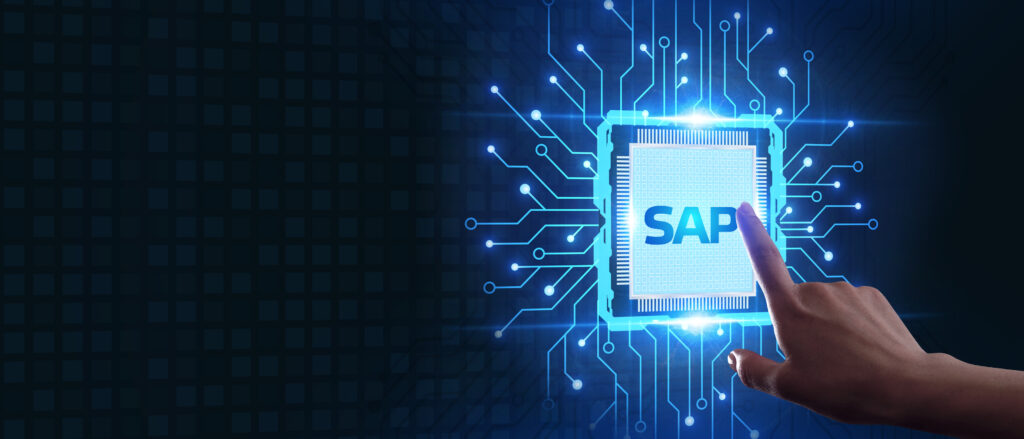
Three years into a sweeping transformation that has turned a fairly rigid 50-year-old maker of hardened ERP systems into a high-growth enabler of cloud-based intelligent enterprises, SAP today not only tolerates but eagerly prizes software solutions developed outside of SAP by its global partner ecosystem.
For those with a sense of SAP’s history, that represents a profound change — and not only in technology. It’s also a sign of a massive cultural shift inside a global corporation that not so long ago embodied the “NIH” (not invented here) syndrome, along with a clear recognition that outside the company, customers today simply want and need more than SAP itself can provide.
You’ll see and hear that transformation echoed in the comments of chief partner officer Karl Fahrbach in my analytical piece below as well as in the full-length video of my interview with Fahrbach that you can watch here.
Not so long ago, partners were viewed by SAP and all of the other major tech vendors as last-step fulfillment adjuncts that dropped off or installed the solution, grabbed a check, and left. Today, however, Fahrbach says partners are indispensable at every stage of the customer lifecycle, from assessing needs to imagining innovative possibilities to creating new business models.
In fact, Fahrbach says he believes that in the near future, SAP will in fact become a “partner-led” company.
That’s a pretty bold statement — but it’s one that’s being echoed to varying degrees by all of the other Cloud Wars Top 10 companies I’ve spoken with for this Partners Ecosystem Innovation series. Last week, we shared to ecosystem strategies of ServiceNow, Snowflake, and Oracle, and this week we’re featuring comparable overviews of Workday, SAP, IBM, and Google Cloud.
Company Overview: Under the impressive leadership of CEO Christian Klein, SAP has become the second-fastest-growing major cloud provider in the world, with cloud-revenue growth exceeding 30% throughout 2022. SAP’s S/4HANA Cloud posted growth rates of 90% or more last year, and the company’s Business Technology Platform is growing at more than 40%. SAP has also been an ambitious innovation leader in go-to-market approaches for the cloud, with its RISE program becoming what Klein has called the “centerpiece of our strategy” and its new GROW program focused on midmarket companies looking to get into the cloud quickly and easily.
Ecosystem Leader: Karl Fahrbach, Chief Partner Officer and member of SAP’s Executive Leadership team. You can watch my full video interview with Fahrbach here.
Ecosystem Position: “When you go to the cloud, the main metric and main goal is making our customers successful. And in order to do that, we need to be basically in the entire customer-lifecycle journey with our customers. And there is no way we can do it alone — SAP has 100,000-plus employees but with the huge customer base that we have and as we continue to add more customers, we need great partners,” Fahrbach said. “We need partners in the entire lifecycle of the customer, including a very big role when it comes to innovation development. And this is why we look at partnering from a development side and want partners to play a big role in our portfolio, to complete our portfolio and make it richer. And then we continue to need as well partners in the sales cycle to make sure they help us sell as well as expand into new markets. But then once we close the deal, we need to make that customer successful. And that’s how our ecosystem partners play a key role in really infusing innovation and transformation for the customers in every single step of the way.”
Ecosystem Priorities: “We recently launched our SAP Datasphere solution and that comes with a big partnering element — we just announced Confluence, Collibra, Databricks, and DataRobot as new partners. So you see that even in our product portfolio assets we include partnering, and then when we look at the industries it’s the same way: in every single industry, we want to go partner-led, we want to make sure that we actually complete our cloud industries with partners, because we realize that we cannot do everything on our own,” Fahrbach said. “We really screen the market and look at which partners can better feed into those whitespaces that we have in industries or around our LOB products to make our solutions more complete. So that’s a big change at SAP: we are becoming partner-centric and you will see that not only on the development side but as well on go-to-market partnering and everywhere it can drive customer success.”
Register here for your on-demand pass to view all content from Partners Ecosystem Digital Summit. The digital event, which took place on April 20, focused on analyzing the business and IT imperatives around cloud, AI, automation, data modernization, and cybersecurity that define the future of partnerships.
Innovation Agenda: “We see a big change towards sustainability. It’s an area that is quite new, and it’s a category that we are creating,” Fahrbach said. “So partners are driving a lot of this work and coming to us with ideas and with solutions for IT that as well can complement that sustainability. And when we look at other challenges like supply chains that have undergone huge disruptions, we see more partners thinking forward and coming up with really creative solutions on how to help as well to bridge those gaps towards really offering that solution. And then lately, we see a lot of partners as well investing in AI to enable new AI solutions that make our solutions even more intelligent when we combine it for the end customer. That’s something that is very rapidly evolving.”
Unique Approach: “We always make sure that through our Business Technology Platform, the partner solution is well integrated with the SAP solution make sure the customer has a great integration and they see how everything works seamlessly,” Fahrbach said. “And then when it comes to the final step of going to market, again, our account executives get paid for that. So those SAP salespeople are interested in making sure that the customer gets not only the solution but also is provided with enablement and with trainings. For each of those partnership engagements, there has to be a very close alignment in terms of looking at the forecast and the timeline, and the customers and partners work closely to ensure there is a full alignment all the time from a go-to-market perspective. We make sure all of that is always embedded into the end-to-end solution for the customer. On the technology side, the integration to the Business Technology Platform allows the customer to consume the partner solutions in an integrated way so that it’s seamless for the customer. So we have that technology integration along with very close alignment from a go-to-market perspective in terms of understanding the customer needs all working together as one thing.”
Big Quote: “In the old days, partners were involved only we looked at sales forecasts — what are the sales going to be for the quarter? Beyond that, partners were irrelevant, because they were always an indirect part of the business. But now we involve our partners in every kind of opportunity, and when we look at how are we making our customers successful and we look at our customer 360 to make sure we have the right measures in place for that success, the partnering element is always there. And I think that has been a big change in the DNA of the company.”
Get the Full Story: You can watch my full video interview with SAP Chief Partner Officer Karl Fahrbach here.









